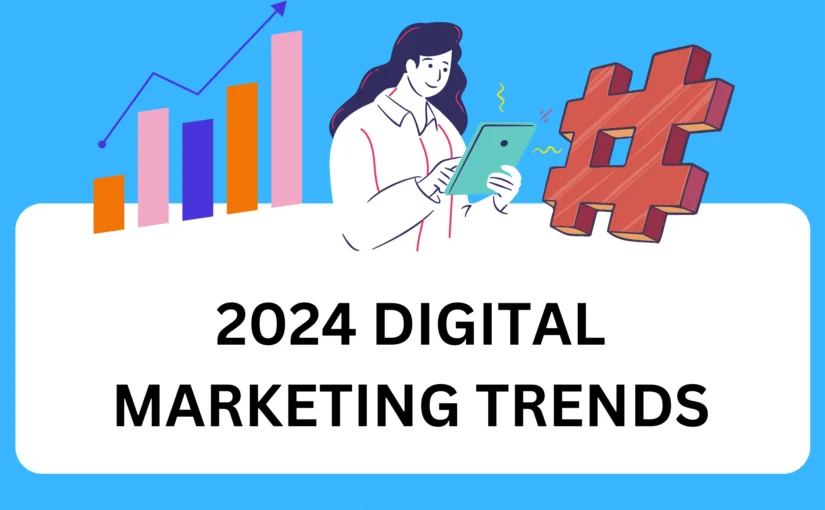In the ever-evolving realm of online advertising, staying ahead of the curve is imperative for businesses seeking to thrive in the digital landscape. As we navigate through 2024, the dynamics of online advertising continue to shift, influenced by emerging technologies, evolving consumer behaviors, and regulatory changes. This article delves into the top online advertising trends shaping the industry in 2024, providing insights and strategies to help businesses capitalize on these trends effectively.
- Personalization and Contextual Targeting: Personalization remains a cornerstone of effective online advertising in 2024. However, the approach has evolved beyond basic demographic segmentation. Today, advertisers harness advanced data analytics and AI-driven algorithms to deliver hyper-personalized ads tailored to individual preferences, behaviors, and contexts. Contextual targeting, which involves serving ads based on the content of the webpage or the user’s real-time context, has gained prominence due to its relevance and effectiveness. By leveraging machine learning algorithms, advertisers can decipher contextual cues and deliver ads that resonate with consumers, enhancing engagement and conversion rates.
- Privacy-First Advertising: With increasing concerns over data privacy and regulatory scrutiny, privacy-first advertising has become a focal point for advertisers in 2024. The implementation of regulations such as the General Data Protection Regulation (GDPR) and the California Consumer Privacy Act (CCPA) has necessitated a shift towards transparent and consent-driven advertising practices. Advertisers are adopting privacy-enhancing technologies such as differential privacy, federated learning, and decentralized identifiers (DIDs) to protect user data while still delivering relevant ad experiences. By prioritizing privacy and respecting user consent, advertisers can build trust with consumers and mitigate the risks associated with data breaches and regulatory non-compliance.
- Immersive Technologies: AR, VR, and 3D Advertising: Immersive technologies, including Augmented Reality (AR), Virtual Reality (VR), and 3D advertising, are revolutionizing the online advertising landscape in 2024. These technologies offer unparalleled opportunities for brands to create interactive and memorable ad experiences that captivate audiences. AR ads enable users to visualize products in their real-world environment, facilitating informed purchase decisions and driving engagement. VR advertising transports users to immersive virtual environments where they can interact with branded content in a highly immersive manner. Additionally, 3D advertising allows brands to showcase products from every angle, providing a lifelike experience that enhances brand perception and drives conversions. As these technologies become more accessible and affordable, advertisers must embrace them to stand out in a crowded digital ecosystem.
- Video Advertising Dominance: Video advertising continues to dominate the digital landscape in 2024, fueled by the popularity of streaming platforms, short-form video content, and social media. Advertisers are allocating larger portions of their budgets to video ads, recognizing their ability to convey compelling narratives and evoke emotional responses. Short-form videos, particularly on platforms like TikTok and Instagram Reels, have emerged as powerful vehicles for brand storytelling and product promotion. Moreover, the rise of Connected TV (CTV) and Over-the-Top (OTT) platforms has expanded the reach of video ads, enabling advertisers to target audiences across multiple devices and streaming services. To capitalize on the growing demand for video content, advertisers must prioritize creativity, authenticity, and relevance in their video ad campaigns.
- Voice Search and Audio Advertising: The proliferation of voice-activated devices and smart speakers has ushered in a new era of voice search and audio advertising in 2024. With millions of consumers using voice assistants like Siri, Alexa, and Google Assistant to perform searches and access information, advertisers are adapting their strategies to capitalize on this trend. Voice search optimization (VSO) involves optimizing website content and ad campaigns to align with natural language queries, ensuring visibility in voice search results. Additionally, audio advertising on streaming platforms, podcasts, and digital radio services presents an opportunity for brands to engage audiences in a non-intrusive manner. By leveraging the power of voice and audio, advertisers can create immersive brand experiences that resonate with consumers in their daily lives.
- Sustainability and Purpose-Driven Advertising: In an era of increasing environmental consciousness and social activism, sustainability and purpose-driven advertising have emerged as significant trends in 2024. Consumers, particularly younger generations, are gravitating towards brands that prioritize sustainability, ethical practices, and social responsibility. Advertisers are incorporating sustainability messaging and purpose-driven narratives into their campaigns to connect with socially conscious consumers and differentiate their brands. From eco-friendly product packaging to cause-related marketing initiatives, brands are aligning their values with those of their target audience to build trust and loyalty. By authentically championing sustainability and social causes, advertisers can foster deeper connections with consumers and drive positive brand perception.
Conclusion: As we navigate the digital landscape of online advertising in 2024, businesses must adapt to the evolving trends and consumer preferences to stay competitive. From hyper-personalization and privacy-first advertising to immersive technologies and purpose-driven messaging, the key to success lies in embracing innovation while staying true to core brand values. By leveraging these top online advertising trends effectively, businesses can engage audiences, drive conversions, and ultimately, achieve their marketing objectives in the dynamic digital ecosystem.
